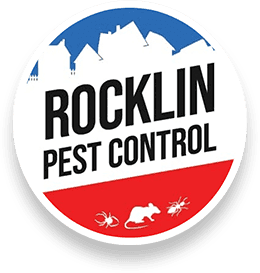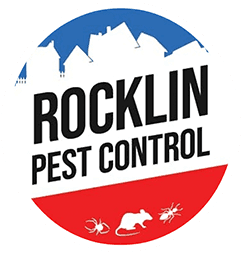Are you moving to California or you’re already living in the golden state? Like with any place you choose, living here has its ups and downs, and one of its downsides is the ever-annoying pest problems.
Pest control is a year-round concern for California households, but have you noticed more common pests inside your house when fall comes in?
As the temperature drops, common pests start looking for warmer nests and sheltered spots for hibernation. Since the indoors are mostly more temperate than the outdoors, they target the cracks and crevices inside your home.
It is harder to spot insects and bugs during autumn since they stay inside the walls for warmth. On rare sunny winter days, you can find them in the bright areas of your house.
Aside from eating your food and damaging furniture, home-invading pests are alarming because they are possible disease-carriers. To avoid these inconveniences, here are the pests you should keep an eye out for:
Cockroaches
Though there are several cockroach species, their behaviors are pretty much the same. Finding one in your home usually means that they have friends hiding in other areas too.
There are instances when cockroaches sneak through your house through bags, shoes, and other containers, making it easy for them to infest and multiply in other properties.
Cockroaches love damp, dark, and dirty places. They leave a musty, pungent smell and skin sheddings that may cause allergic reactions to some people.
During colder days, they settle in areas where they have easy access to food and water, making your kitchen and food storage cabinet most prone to cockroach infestation. They usually look for food at night when the lights are out.
Avoid having leftovers and leaving food storage cabinets open to prevent uninvited guests from feasting on it.

Stink bugs
The brown marmorated stink bug is non-native to the United States, that’s why their natural predators do not exist on these parts. Because of that, their population grew fast over the years. They stay on the surfaces of objects, and sometimes these objects were moved from one place to another giving them the ability to travel with it.
Stink bugs pierce through fruits and vegetables, which later on gets spoiled and inedible.
When threatened, they produce a rotten, harsh smell that can linger in your house for days; hence, the name stink bug. Because of their foul smell, stink bug removal is challenging and may require professional assistance.
Bed bugs
Do you suddenly have itches in the morning that annoys you? Bed bugs are probably crawling all over you while you sleep. As creepy as it may sound, they are most active at night. The warmth and moisture on your skin attract bed bugs.
Cold weather requires additional layers, and these small creatures are drawn to used clothes and beddings, making them extra pesky during this season. For mild bed bug contamination, using hot water for laundry and steaming possible hiding places like your couch, mattresses, and pillows, can solve your bed bug problem.
Ants
It’s not common knowledge that ants damage structural materials like wood and foam insulation over time. They also infest food and bite on human skins when disturbed. These reasons alone are enough to treat them as a threat to your house.
Ants are known to be hard workers, especially towards the winter months. They work extra hard to find food sources and store it in their nests.
To prevent an ant invasion, make sure that your home is always dry as they love building their nest on moist areas. Seal food properly and do not leave crumbs on tables and countertops.
Rodents
Due to restaurant closures because of the pandemic, rats are becoming more aggressive in invading residential properties.
The presence of rats and mice in your house poses health and security risks to you and your family. This common autumn pest is known for rat-bite that can lead to infection if left untreated.
In addition to that, rats chew almost everything, even electric wires, which cause fire and gadget damage. Their chewing habit destroys furniture and the house structure as well.
Rats have oily furs that leave rub marks on walls and furniture throughout the house. You can use this to track their trail and eventually find their rat hole. Sometimes, they even leave excrement behind.
Protect yourself and wear latex gloves whenever you clean up their rub marks and excrements to avoid getting infected.
Prevention is critical in combatting rat infestations, inspect the house for holes and gaps that can be their entry point. If you found any, repair or seal them off completely. Never ever leave leftover food lying around the house, including pet food.

Spiders
Unlike the other autumn pests we discussed, spiders do not seek warm shelter during the cold season since they are cold-blooded creatures and are not attracted to warmth.
They are instead more active because autumn is their mating season, and the females are building up nests where they can lay their eggs on. That’s the reason why they are more visible in autumn than in any other season.
Spiders are actually helpful since they are insect predators, but if spider webs inside your house annoy you or you don’t want to risk getting bitten, there are ways to keep them out.
Use your vacuum to clean out their nesting area. After that, remove the vacuum bag and put the dirt in a sealed disposable bag. Take the trash outside or give it directly to garbage collectors.
Regular trimming of trees and shrubs in your lawn and backyard helps prevent spider invasion in your house. Make sure that the stems of your plants are at least four feet away from windows as they can use this as a bridge to get inside your house.

Stinging insects
Ever wonder why bees and wasps are buzzing during autumn? Bees increase their hives on warmers days until the end of the summer. That is why, during autumn, they get extra busy collecting food to sustain the colony and provide winter food for storing.
While wasps are just trying to have fun before they bite the dust. Their food-gathering behavior changes at the onset of fall because they are no longer looking for insects as a protein source for newborns in the colony. Adult wasps prefer sweets from flowers than insects; that’s why you see them everywhere.
Both the bees and the wasps are generally harmless, but they do sting humans as a defense mechanism. The best way to avoid stings is to maintain a safe distance from these autumn pests.
But what happens if the bees and wasps are inside your house? Since they are both attracted to sugary scents, store your sweets in tightly sealed containers and closed stockrooms.
As an additional precaution, you should replace sweet-smelling soaps and perfumes with neutral scented variations to prevent bees and wasps infestation.



